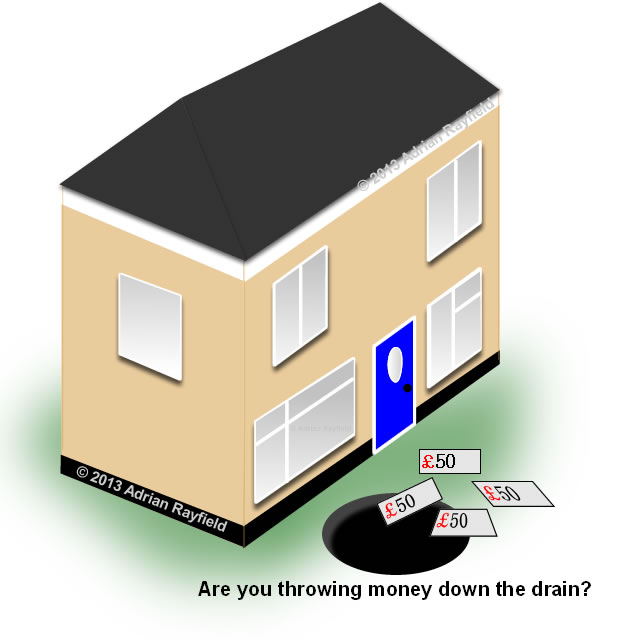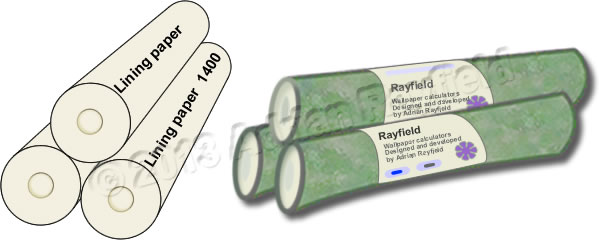Painting, decorating and home improvement tips blog
10 things that can devalue your property
Posted by Adrian
July 19th, 2019

10 things that can devalue your property
You can do thing’s that improve your property but you can also do things that will devalue your property, obviously this isn’t a good thing and when selling your property could affect how quickly you sell your property.
You have to think like a buyer and what they maybe looking for, offer a plain canvas so they can put their own mark on the place. The following 10 items maybe good reason for the buyer to knock your asking price down, so take a read and see if you can improve your property before a buyer views your house.
First impressions
First impressions count so make sure your property has good kerb appeal, make sure the frontage is tidy, keep it clean, if you have a garden have some nice shrubs of flowers and keep the weeds and grass down, don’t let the grass get so high you can lose a small child in it. If your property is in need of decoration either do it yourself of call on the services of a professional decorator to do the job for you.
You only get one chance to make a first impression, make it a good one, not a bad one. Bad first impressions are hard to change.
Kitchen
Is your kitchen taken out of the ark? Is it greasier than a chip shop? If your kitchen has seen better days it maybe time to have a new one or at least retrofit it by fitting new door and draw fronts to it. If the walls are greasy use some strong degreaser to remove the grease.
A clean bright modern kitchen will add value to your property, a run down old one will reduce it’s value. The kitchen is the hub of any home, it should be a nice place to be.
Another thing to consider is if you fit a kitchen that nobody else likes this could also devalue your home, that’s not to say you can’t be modern or contemporary with your choices but when people come to view your property they will have in their minds, “Needs a new kitchen”, and knock your asking price down accordingly.
Bathroom
Much the same as a kitchen the bathroom should be clean and bright. If you have carpet is it in good condition or stained and mouldy, an alternative is a tiled floor, which is easy to keep clean and mob up water.
If you still have a bathroom suite from the 1960’s or 1970’s that is chocolate brown, avocado, turquoise or pink unless you have a retro styled bathroom it could knock a little more of the asking price. White is very popular today with more attention being spent on the accessories such as waterfall taps.
A tiled bathroom is often found nowadays rather than papered due to the fact of the dampness you get in a bathroom from the steam, if you have wallpapered walls that is coming off at the corners, invest in some paste and stick them back.
Decoration
There is nothing wrong with bright colours or big bold patterned wallpaper, but all things in moderation, especially from a buyers point of view. If your decoration is in good condition then you don’t have to worry too much but if you haven’t decorated for the past 15 years consider digging out the paint brushes and roller to give your house a lick of paint to freshen it up.
If you have bright bold colours, consider taming them down a shade or two before putting the house on the market, it won’t be such a shock to the viewers then.
Garden
Both front and rear garden’s are important to maintain, mow the lawn, weed the border and plant some nice shrubs and bedding plants in the border. If you have fast growing Leylandii conifers in the garden make sure they are well maintained and trimmed, the last thing you want to do is end up with a dispute with a neighbor, especially if you are trying to sell your property.
If you have a patio area or decking, give it a clean. Sweep up the fallen leaves. Fix and broken fencing or replace fence panels and mend gates. Put the kids toys away.
Bad workmanship
If you have done any work or had any work carried out on your property make sure it is of a good standard, bad shoddy workmanship shows up and will put people off as they know they will have to redo the work again correctly.
You should never do the work yourself unless you have a good knowledge of what is required, any gas, electric, plumbing and heating should be carried out by a qualified person. If bad workmanship is seen people will wonder what else hasn’t been done right or how much is this going to cost me to put right, all of which devalues your property.
Bad or illegal building
If you have had any building work done in must of been passed with the local building authority, if it isn’t you’ll have real problems when it comes to selling, plus it’s illegal and you could be asked to take it down.
Another issue arises if you live in a listed building, there are rules you have to follow and things you are and are not allowed to do to a property, go against this at your peril and at the expense of devaluing your home.
Building with no planning permission when permission is required will make your property untouchable for many buyers, it just isn’t worth the hassle, so make sure all the paperwork is in order and that the local building authority are happy with your new build before trying to sell.
Woodchip and artex
If you still have woodchip wallpaper or artexed walls this could certainly devalue you property as it isn’t in fashion any more and it can be fairly costly to remove it and have the walls plastered smooth again.
Having woodchip or artexed wall could also show to potential buyers that you haven’t decorated in a while, it could be a deal breaker so consider removing them if you still have them before selling, or be prepared to drop the asking price accordingly.
An Englishman’s home is his castle
As the old saying goes, “An Englishman’s home is his castle”, but that doesn’t mean you have to ram in every period feature into one house, it is good to have original period features but if you adding features be careful not to over do it.
You don’t want to have a ceiling rose with a large light fitting, a picture rail, a dado rail, ornate eight inch skirting boards in a 1960’s end terrace, it just won’t look right and may put people off buying your house as it doesn’t look like a 1960’s end terrace it may look just a bit, over done. So it maybe a good idea to try and keep true to the period of your property when you do it up.
Smells
If you have pets such as cats, dogs and you let them run freely around the entire house you may have pet smells in your house, to avoid this try keeping them downstairs and maybe to one or two rooms to keep smells to a minimum.
Also be aware of leaks, a slow drip from behind the concealed toilet cistern or a leaking kitchen tap will make the surrounding area damp and in time this will smell, if you know you have a leak try and fix it as soon as possible, if you have rotten wood caused by a leak, replace it.
Smells can also come from leaking drainage, you should fix these as soon as possible, not only because of the smell but because of hygiene also.
In summary
I hope this post has been thought provoking as well as useful and pointed out some things that could devalue your house but maybe you hadn’t thought about before.
Tags: Artex, Bathroom, Decorating, Gardening, Kitchen, Woodchip
Posted in Decorating Tips, Home Improvements | No Comments »
Should I use lining paper before wallpapering
Posted by Adrian
July 9th, 2013
Do I need to hang lining paper before I put up wallpaper
Is it necessary to put up lining paper prior to wallpapering? in most cases the answer would be no. If your walls are old and have been filled many times or there are lots of imperfections then you may consider lining the walls before wallpapering. Putting lining paper up before wallpapering doesn’t mean you don’t have prepare the walls first, because you do. Preparation is always the most important part of decorating.
Another reason for lining the walls prior to wallpapering would be if the wallpaper is thin, or if it is a foil paper and you need a good sound surface to wallpaper onto. Some manufacturers say on their wallpaper, “We recommend you line the walls first”, in which case it is best to take their advice.
You may also have different finishes on a wall such as gloss where shelves used to be or maybe different strong dark colours that may show through, in this case you could simply use matt emulsion to obliterate the colour and have the same finish over the entire room, or you may decide to use lining paper.
Lining paper shouldn’t be required for heavy textured papers, Anaglypta wallpapers, of woodchip as these are designed to hide imperfections on walls. If you line the walls unnecessarily you are just wasting your time and money.
What grade of lining paper
In most cases 1200 to 1400 gauge lining paper will be sufficient to apply to the wall before wallpapering. However if your walls are in a really bad condition you could use a 2000 gauge lining paper. You can also buy specialist papers such as thermal liners, sound proofing liners and damp proof liners, but typically standard lining paper will suffice.
How do I measure for lining or wallpaper
Before you buy lining paper or order wallpaper you need to know how much to buy. I have written an article on how to measure a room for wallpaper that explains how you need to do it. I have also written a wallpaper calculator so you can work out how many rolls of wallpaper you need to buy.
Things you should know about lining paper
Before you rush out and buy lining paper and hang it there are a few things you should know first, lining paper can shrink when it dries, this isn’t too much of a problem if you are wallpapering over it as long as the gaps are small.
You may also consider hanging the lining paper horizontally, or cross lining as it’s known. This will prevent any joints of the wallpaper laying on top of the lining paper which may lift the lining paper when it dries.
If you use lining paper before you wallpaper, ensure it is well stuck , you don’t want the lining paper lifting once your expensive wallpaper is on the top of it, ensure you soak the lining paper well enough, so it is supple before hanging, ensure plenty of good quality paste is used. Once the lining paper is hung and dry you can go over it with paste to help seal the lining paper and give the wallpaper a little bit of extra stick when you hang it.

Tags: Anaglypta, Cross lining, Damp Proofing, Foil wallpaper, Lining Paper, Sound Proofing, Thermal liner, Wallpaper, Wallpaper Calculator, Woodchip
Posted in Decorating Tips | 53 Comments »
